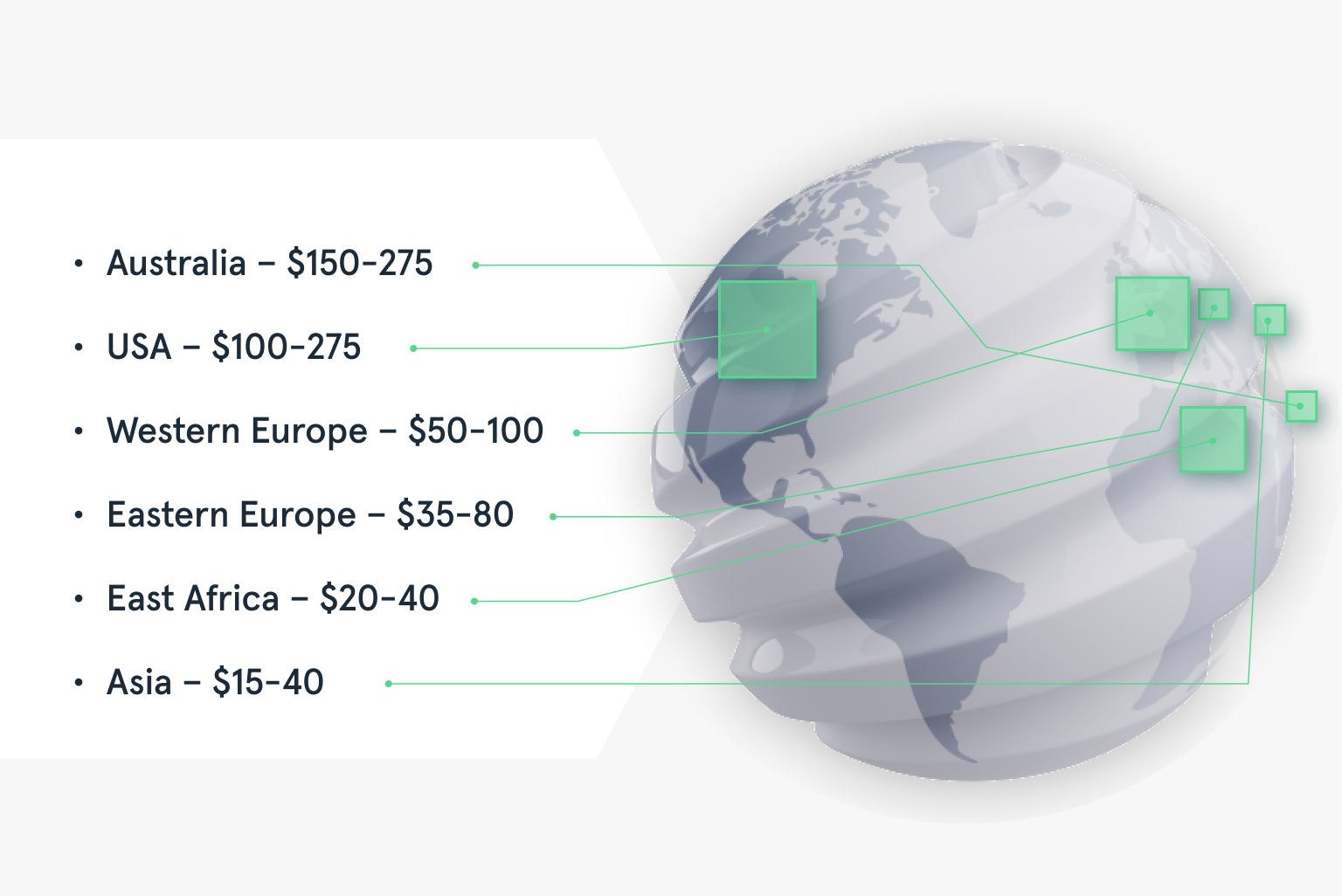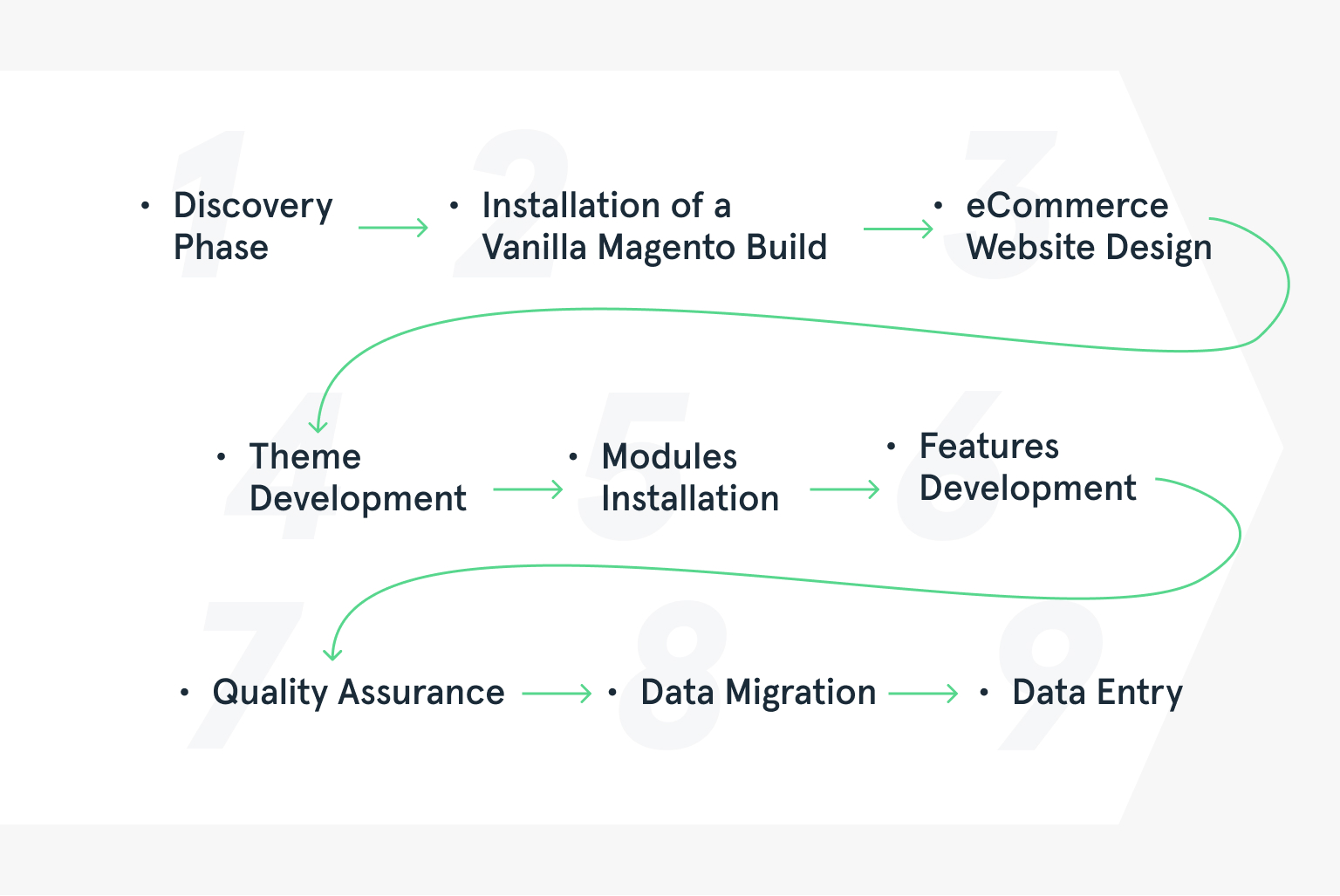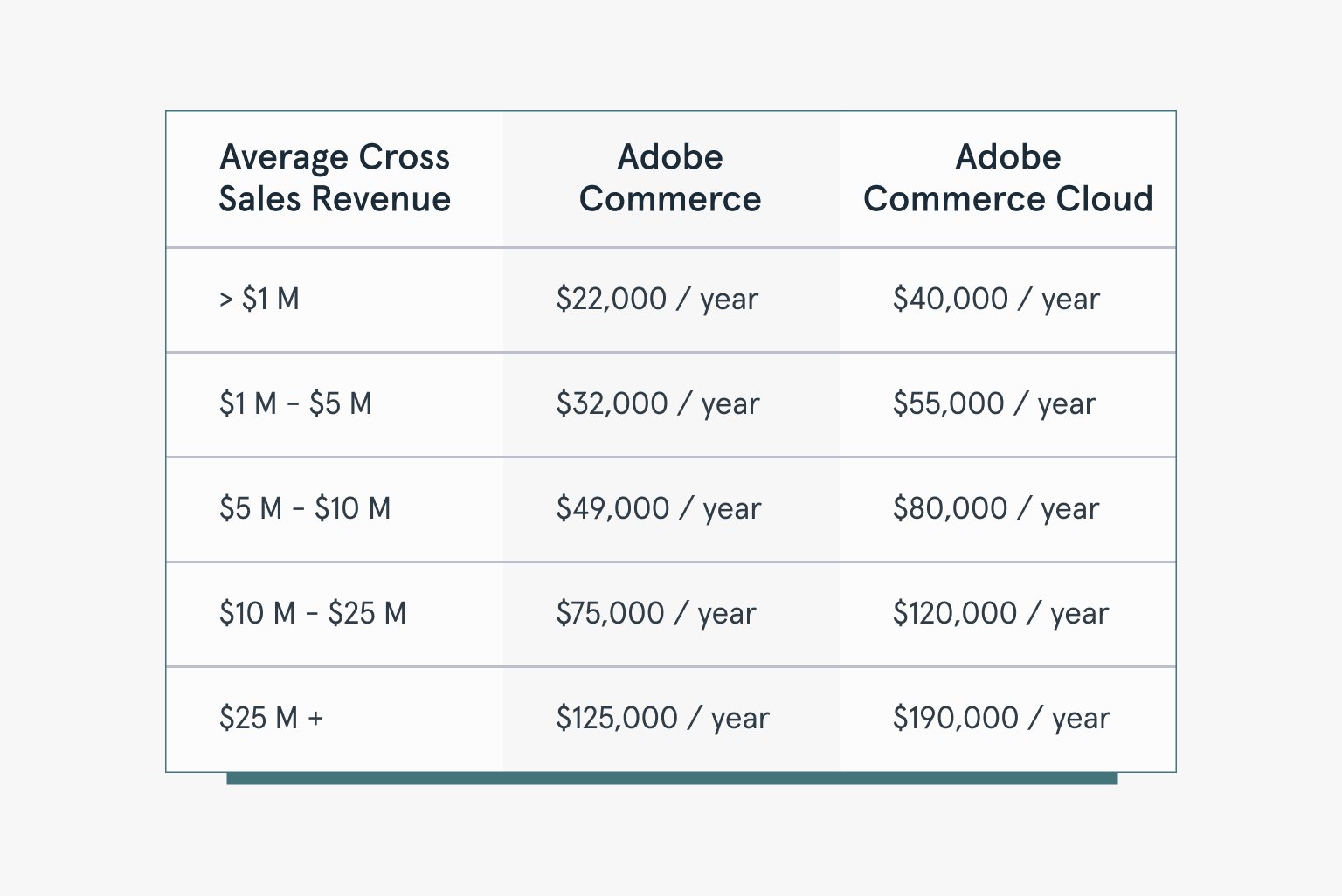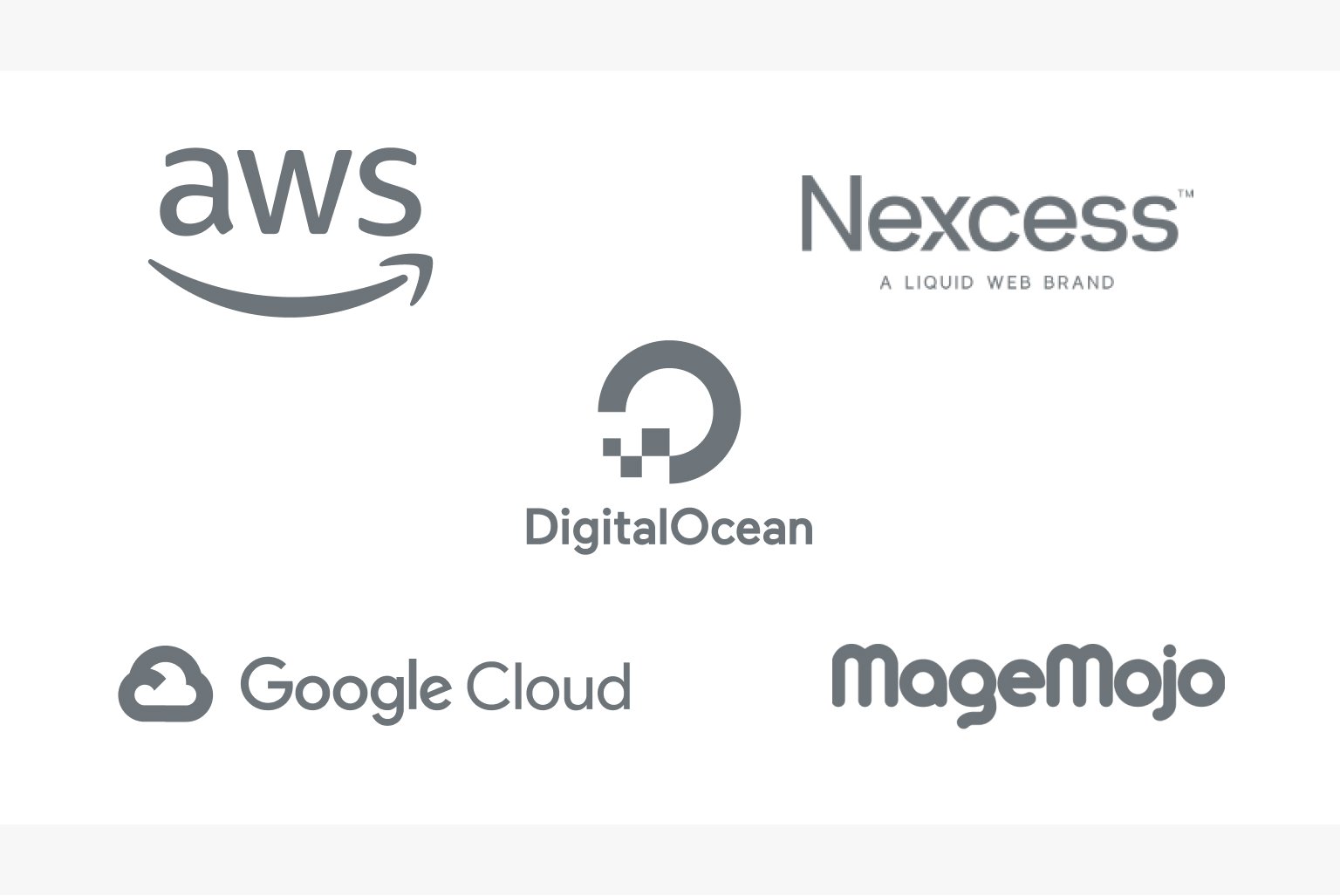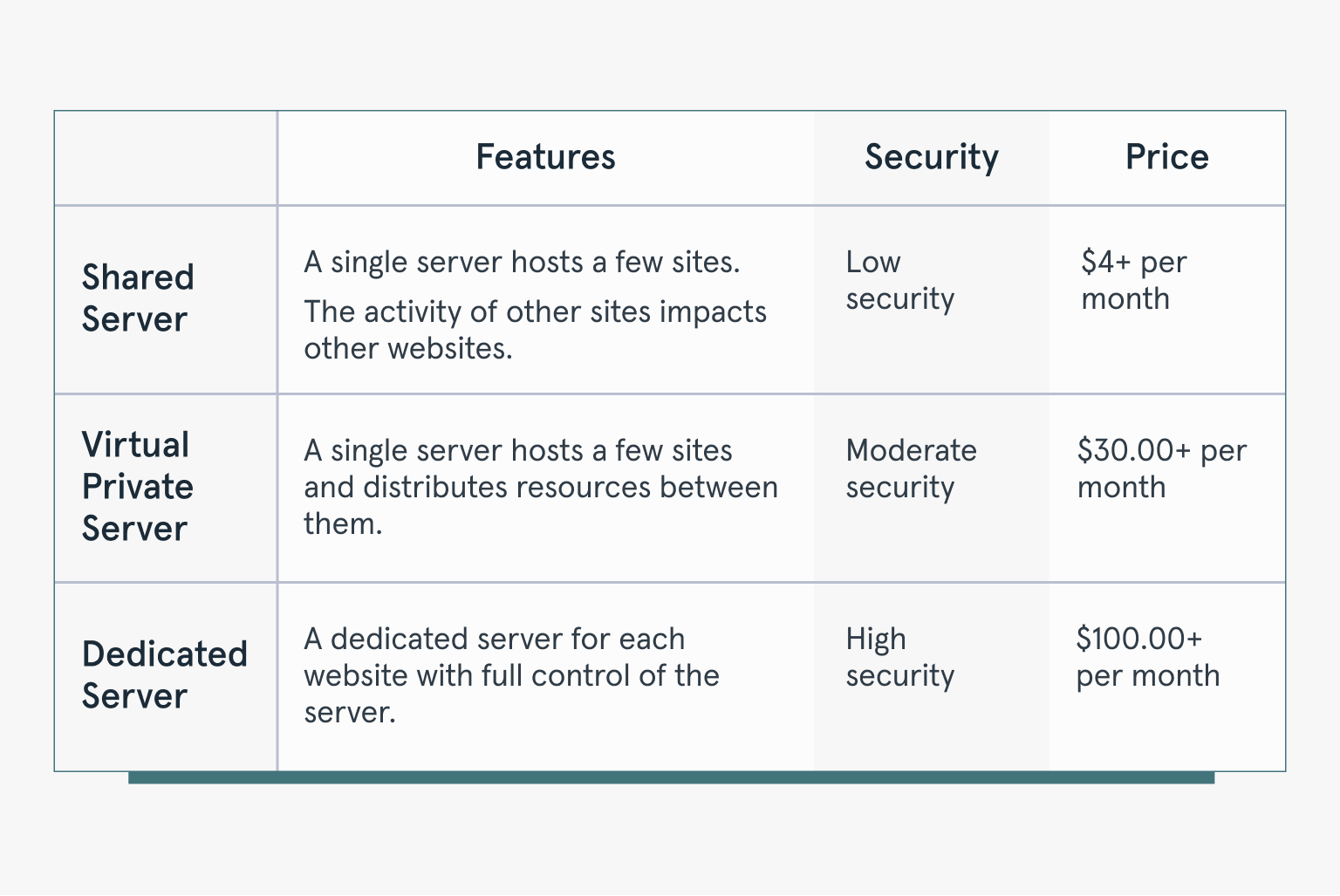How much does it cost to develop a Magento website?
The prices range from $10,000 to $500,000.
Surprised by such a price range?
Magento website development cost depends on several factors: features, third-party integrations, modules, customizations, design and its difficulty, branding collaterals, outsourcing location… The list goes on and on.
We’ve prepared this guide to provide a comprehensive overview of the Magento website development price. Instead of taking numbers out of nowhere, we’ve made our estimations based on 11+ years of experience, and over 1000+ built eCommerce websites.
In addition, you’ll also learn:
- Magento website development cost [based on business size]
- Processes involved in the Magento website development process
- Additional factors influencing Magento website cost
Let’s move on to the Magento development cost estimations.
Magento Website Development Cost
Note: this article provides estimates for Magento website development from scratch. Calculating the price of developing an existing website is only possible with its prior audit.
Need help with your existing website?
Get in touch with GOMAGE for a project discussion and estimation.
Get a free project estimate
Before we move forward, look at the map below showing the average cost of Magento development services across different locations worldwide. Depending on the outsourcing location, it can double or even triple the Magento website cost.
Small Magento Website
Development time: 150 – 450 hours
Development cost: $7,500 – $22,500
This option is ideal for small companies just starting their eCommerce journey.
* Here and below, the costs are calculated based on an average hourly rate of $50 for Magento website development services.
Development of a small Magento website includes minimal work on the website, just a few tweaks of the provided out-of-the-box functionality. Such an option is usually a starting point for businesses just kicking off their eCommerce journey.
What you get at this cost:
- The use of a basic or default Magento theme with a responsive design. The provided services include some basic changes, such as the change of logo, fonts, basic colors, and minor layout adjustments. Ultimately, your website will look like the Magento Luma theme provided out of the box.
- Installation and basic configuration of up to ten third-party extensions. No customizations are included here.
- Installation of Magento on a server of your choice (spoiler: better to consult with your development vendor on choosing the right one). The price doesn’t include in-depth server optimization for the best performance. But in most cases, it’s not required for small eCommerce stores, and they can run pretty fast without any optimizations.
- Configuration of to 10 pages, such as a product page, category page, etc.
- Data migration from the eCommerce platform you’re already using. This option might also be available, especially if you’re migrating from Magento 1 to Magento 2.
Development Get a robust PWA
Supercharge your eCommerce efforts with superb UX and ‘superfast’ speed. Build an eCommerce PWA from scratch or save time and money using GoPWA Storefront.

Medium Magento Website
Development time: 450 – 900 hours
Development cost: $22,500 – $45,000
This option is ideal for companies who are already in eCommerce or plan bringing a medium business to eCommerce.
The development of a medium Magento website includes additional work, such as a more customized design and installation of more extensions. This is a starting point for the vast majority of eCommerce businesses. Such a website will serve an eCommerce business that won’t settle for a generic design but is still not ready to go all out with huge investments.
What you get at this cost:
- Custom design based on a template and configuration of up to 20 pages with unique layouts. Your website will look more customized than the website based on a theme. At the same time, you can’t expect to have a unique website design, as it will boost eCommerce website development costs. The design will be responsive to look great on all devices, including mobile devices.
- Installation and configuration of up to 20 third-party extensions. The services include installation and basic configuration of the extensions. Fixes might be charged additionally if there are any conflicts between extensions or other solutions installed on the website.
- Installation of Magento on a server and its basic configuration. In some cases, in-depth server optimization might be required, especially if you have a product-heavy catalog or install many extensions and third-party integrations.
- Data migration from a different eCommerce platform or from Magento 1 to Magento 2. Some companies might charge additionally for this type of service.
Magento
Development Get an online store that sells. Woo customers with a seamless UX that guides them from the first point of contact to the checkout page.

Large Magento Website
Development time: 1000+ hours
Development cost: $50,000
This option is ideal for companies with solid presence in the market and ambitious plans for future growth.
Projects of this tier usually involve Magento website development with a high level of customization. In the end, companies get a website tailored to their business needs. They get an eCommerce storefront ready to welcome thousands of visitors, offer a unique customer experience, multiple payment options, and all other customizations that a company might need.
Depending on the scope of work and project duration, a full-time team of developers might be required to work on it.
Processes Involved in Magento Website Development
While you know the Magento website cost, let’s dive into the processes involved in the development process. After all, these processes directly influence the cost of Magento development.
Discovery Phase
There is a saying that Discovery Stage can either make or break your project, and the saying couldn’t be more accurate.
During the Discover Phase, an experienced Project Manager, developer, and business analyst perform business analysis and investigate all the functionalities you’ll need on the new website. The primary purpose of this phase is to understand what the client wants to achieve with the help of a development company. During the process, the company comes up with the best way to deliver the results based on the business goals of your project and provides you with more precise project estimates.
If you already have a project vision, you can work with a Project Manager and Developer on business analysis. They will help you investigate the functionality you want to have and turn your ideas into a valid project scope.
Main advantages of the Discovery Phase:
- Decreases unexpected expenses, as you don’t overlook a necessary feature and need to add it in the middle of the development process.
- Making data-driven decisions becomes much easier. You explore your target audience in greater detail and learn what you and your users need from the website.
- Project plan is delivered at the end of the phase that will constitute the basis of the development.
Timelines: 2-8 weeks (20-40 hours for a small project, 40-100 for a medium, 100-150+ for a big one)
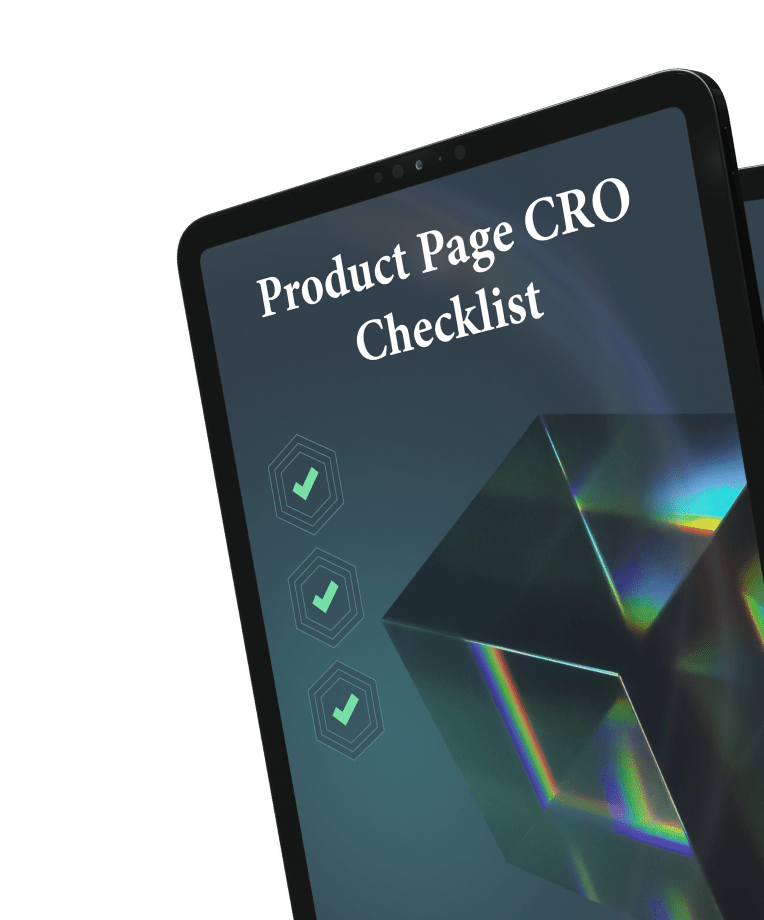
Installation of a Vanilla Magento Build
The development process usually starts with setting up the servers and installing a vanilla Magento build. Usually, the process doesn’t take much time.
Aside from the live version of your website, your team will also set up the dev and staging versions of your projects. This way, they’ll be able to test everything before rolling out functionality to the live site.
Timelines: 4-8 weeks
eCommerce Website Design
Creating a user-friendly website that is attractive to the customers’ eyes is no less important than feature development. During this stage, UX and UI designers create a design tailored to your business needs and customers’ expectations.
Timelines: 2-8 weeks
Theme Development
There are a few options available:
- You can build a Magento website based on the basic Luma theme provided by Adobe out of the box.
- You can purchase a theme and customize it to match your design.
- You can create a Magento theme from scratch, highly customized for your business.
The first two options have some dangers for businesses. Every Magento theme has a built-in set of features. When you install it, you need to identify if there are any conflicts and fix them if needed.
The theme’s quality of code plays huge importance also. A poorly designed theme can also impact website performance. In the end, you might need to invest more time fixing bugs than developing a theme from scratch. And time is money here.
Timelines: 1-2 months (depending on the design complexity and changes needed)
Modules Installation
A small website usually uses around ten modules. The larger your website, the more modules you’ll need.
In most cases, you’ll need the help of developers to install modules. This service will also impact the cost of Magento website development.
Installation of modules with native Magento integration takes around 3 to 6 hours, considering there are no conflicts. The installation of custom modules is an entirely different story. The timeline for their development can reach up to 40 hours and even go beyond this number.
Timelines: 3-6 hours per module (modules with native Magento integration), ~40 hours for custom modules.
Features Development
Functionality that modules can’t cover should be developed from scratch. The list of features you need to create can be very different, depending on your business model or even the country you’re operating in.
Timelines: depends on the work that should be done.
Quality Assurance
After developers are done writing code, it’s time for Quality Assurance Engineers to take the scene and test the code for errors and bugs. Quality Assurance is not a phase to be skipped. You need to hunt down all the errors and bugs before your website goes live and your customers encounter any problems with your website.
The company can offer to conduct different types of testing:
- Manual quality assurance
- Automated quality assurance
- Unit tests
- Integration testing
Timelines: can run during the whole project to test the new functionality gradually. After the development is over, the whole website testing can run again. In the final stage, there is testing by the clients, after which they accept the project or send it for further improvements.
Data Migration
You might already have some information you need to import into your new website. A Magento development company can move product and customer data to your new website from your old one or another system.
Timelines: 100 hours (2-4 weeks, depending on the system you need to migrate data from – whether it’s Magento 1 to Magento 2 data migration or migration from other systems, such as Shopify, WooCommerce, etc.)
Data Entry
This process includes adding product information, such as descriptions, options, photos, etc. You can integrate your Magento website with a PIM (Product Information Management) system to add information once and synchronize it across all sales channels.
Other Price Influencing Factors
A lot of things influence Magento website cost. Aside from development costs, you’ll also need to cover Magento pricing, hosting, extensions, etc. Let’s take a closer look at Magento website development cost-forming factors.
Adobe Commerce & Magento License Costs
Magento is an open-source eCommerce platform used by thousands of businesses worldwide.
Magento is distributed in three versions:
- Magento Open Source – free version of the platform
- Adobe Commerce – paid and self-hosted version
- Adobe Commerce Cloud – paid and hosted version
The one you choose will directly influence Magento website cost. As Magento Open Source is free, you’ll need to pay for development services only. You’ll need to pay for the platform’s use with Adobe Commerce and Adobe Commerce Cloud.
As for Magento license costs, you’ll need to get in touch with Adobe to get an estimate for your business. Usually, the cost of Adobe Commerce starts at around $22,000 per year, and Adobe Commerce Cloud license costs start at $44,000 per year. Still, only Adobe will provide you with the exact Magento license costs based on your business requirements.
Magento Extensions Pricing
There are thousands of free and paid Magento extensions available on the marketplace. The prices usually start from $40 per Magento instance and can go as high as $500 per Magento instance. However, more and more vendors are starting to work on a subscription basis. The prices range from $200 to $500+ depending on the company behind the extension, functionality, and level of support you need.
As was mentioned before, a single module installation takes around 3 to 6 hours. If any conflicts are detected, their fixing can take up to 40 hours.
Remember that the number of modules installed on your website and their quality directly influence website performance. Before installing an extension, however high-quality it might look, consult with your development team before making any decisions.
Magento Themes Pricing
There are quite a few themes for Magento and Adobe Commerce. The cost of Magento themes starts at around $500 for Magento Open Source and Around $1000 for Adobe Commerce and Adobe Commerce Cloud.
When choosing a theme, be aware of the dangers awaiting you if you choose a poor-quality theme. It can break your website performance, limit your opportunities to add the required features, and increase the Magento website development since you’ll need to find workarounds.
Magento Web Design Costs
There are a few options for Magento website design.
You can purchase a Magento theme and customize it for your eCommerce business.
On the other hand, you can hire Magento web designers and create the UX and UI design from scratch. Custom eCommerce website design may cost around $10,000 depending on the complexity of the design, branding, the number of pages that need to be designed, and even the country you’re hiring designers.
Magento Domain & Hosting Pricing
Every website starts with the domain name. It should be easy to remember and descriptive. Customers shouldn’t have problems remembering and recognizing it when they see it.
You can buy a new or aged domain name depending on your budget and business needs. An aged domain is one already indexed by the search engines, which is good for SEO for Magento.
New domains will cost you ~$10-15 per year. Aged domains can cost hundreds or even thousands of dollars. Along with an aged domain, you purchase domain and page authority. It’ll take less time for your website to show in search results when chosen right. If you’re not an SEO expert, it’s better to hire professionals to help you with the choice; otherwise, you can harm your store even before it goes live.
Regarding hosting, you won’t need to concern yourself with it as long as you go with Adobe Commerce Cloud. If you decide to go with Adobe Commerce and Magento Open Source, you’ll need to choose a hosting provider. There are many great hosting providers, such as AWS, Digital Ocean, Google Cloud, Nexcess, MageMojo, etc.
Hosting costs can start at a few dollars a month if you opt for a shared server. If you choose a dedicated server, you’ll need to pay at least $100 per month. Depending on your product catalog, the number of features and customizations, you may end up paying thousands of dollars every month.
Magento Support Costs
Magento website development doesn’t stop when your website is going live. You’ll need to continue working on your website, keep its performance in check and regularly update its security.
Depending on the project and its size, a Magento support team can spend a different amount of time every month making sure your eCommerce website runs like a well-oiled machine.
Magento Website Cost: Wrapping Up
Magento website development is a complex process, and no one can provide you with eCommerce website development costs without knowing your project requirements.
After you ask, ‘how much does it cost to build a Magento website?’, we would ask you the following questions:
- What products do you sell, and what is your target audience?
- What edition of Magento will you use?
- Will you use a ready-to-use theme or create a custom design?
- What functionality do you need?
- What extensions and third-party integrations do you need?
- What countries will your website operate in? Will it be a multilingual website?
- Do you need customer segmentation?
- Do you need Magento SEO services?
- Do you have any additional requirements?
- What are the expected timelines for your project?


